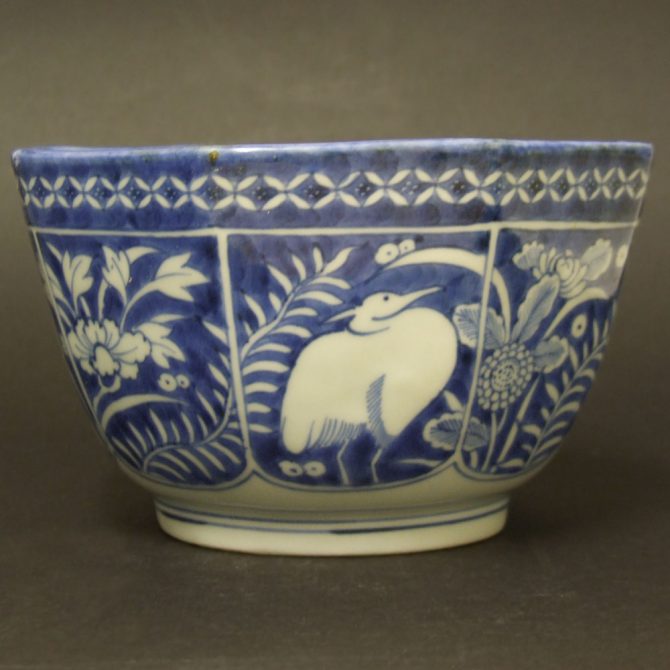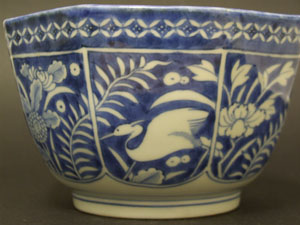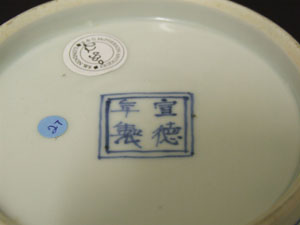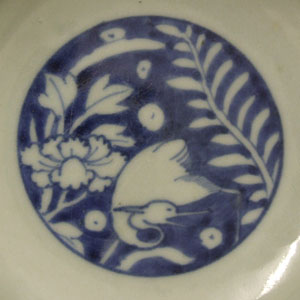
ARITA c.1770 – 1790 Japanese Porcelain
An 18th Century Blue and White Japanese Porcelain Bowl, Arita Kilns c.1770-1790. Decorated Using the White Porcelain to Depict Egrets Among Flowering Plants. The Inner Border with the Eight Trigrams Separated by a Stylized Wave. The Well of the Bowl with a Further Egret. The Base with an Apocryphal Xuande mark (Ming dynasty).
SOLD
- Condition
- Perfect.
- Size
- Diameter : 18.6 cm (7 1/4 inches). Height : 10.6 cm (4 1/3 inches).
- Provenance
- Provenance : From the collection of Japanese porcelain belonging to Spence family, removed from Japan in c.1941. These pieces of Japanese blue and white Arita porcelain were inherited from her mother by Miss Joan Spence who was born in Kobe, Japan. This type of Arita blue and white porcelain was made for the Japanese market and was not exported, consequently it is not commonly found in the West. Shortly before Japan`s attack on Pearl Harbour on the 7th of December 1942, all foreigners were obliged to leave the country with immediate effect, taking only one packing case with them. With the help of their Korean driver and her father`s contact, Joan and her mother managed to escape with eight cases on board a ship to Vancouver. Apart from some pieces that were given away, this collection of blue and white Japanese porcelain has been largely kept in tact since it left Japan in c.1941.
- Stock number
- 22980
Information
The Eight Trigrams / Ba Gua :
The Ba Gua literally eight symbols are eight diagrams used in Taoist cosmology to represent the fundamental principles of reality, seen as a range of eight interrelated concepts. Each consists of three lines, each either `broken` or `unbroken`, representing a yin line or a yang line, respectively. Due to their tripartite structure, they are often referred to as Trigrams in English. The Eight Trigrams are ☰ Qián Heaven, ☱ Duì Lake/Marsh, ☲ Lí Fire, ☳ Zhèn Thunder, ☴ Xùn Wind, ☵ Kǎn Water, ☶ Gèn Mountain, ☷ Kūn Earth.


